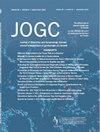Replacing Iron and Preventing Anemia in Pregnant patients of Limited Economic means (RIPPLE): The Impact of Funding Iron Supplementation in Pregnancy
IF 2.2
Q2 OBSTETRICS & GYNECOLOGY
引用次数: 0
Abstract
Objectives
Can funding iron supplementation for low-income pregnant patients reduce socioeconomic disparities in anemia rates at delivery?
Methods
This single-centre cohort study reviewed hematologic parameters and iron supplementation patterns in 3 groups: patients from low-income neighbourhoods, non-low-income neighbourhoods, and low-income patients enrolled in the RIPPLE (Replacing Iron and Preventing anemia in Pregnant patients of Limited Economic means) program. RIPPLE provided access to intravenous iron to patients with an annual household income ≤$50 000 CAD and moderate-to-severe iron deficiency anemia, symptomatic iron deficiency with intolerance/inadequate response to oral iron, or iron deficiency anemia with less than 4 weeks to delivery. Patients were referred by their obstetrical provider, hematologist, or pharmacist. The primary outcome was anemia (hemoglobin <110 g/L) at delivery.
Results
Among 1206 patients (577 low-income, 603 non-low-income, 26 RIPPLE), anemia at delivery was more frequent in RIPPLE (54%) versus low-income (10%) and non-low-income (7%) groups (P < 0.0001). RIPPLE participants exhibited lower nadir hemoglobin (98.8 ± 9.9 g/L) and ferritin (9.6 ± 6.4 μg/L) compared to low-income (hemoglobin 114.2 ± 10.1 g/L, P < 0.0001; ferritin 30.0 ± 24.0 μg/L, P < 0.0001) and non-low-income groups (hemoglobin 115.9 ± 8.1 g/L, P < 0.0001; ferritin 40.9 ± 44.1 μg/L, P < 0.0001), and received infusions later in pregnancy (≤3 weeks pre-delivery: 42% vs. 27% vs. 9%). The RIPPLE cohort included more racial and ethnic minoritized individuals (73% vs. 58% vs. 33%).
Conclusions
While funding for iron supplementation addressed cost barriers, disparities in care persisted. Our findings underscore the need for universal access to early screening and timely escalation from oral to intravenous iron to reduce social, racial, and ethnic disparities in care.
经济条件有限的孕妇补铁和预防贫血(RIPPLE):评估资助妊娠补铁的影响
目的:资助低收入孕妇补铁能否减少分娩时贫血率的社会经济差异?方法:本单中心队列研究回顾了三组患者的血液学参数和补铁模式:低收入社区患者、非低收入社区患者和纳入RIPPLE计划的低收入患者。RIPPLE为家庭年收入≤5万加元、中度至重度缺铁性贫血、对口服铁不耐受/反应不足的症状性缺铁或分娩前不到4周的缺铁性贫血患者提供静脉注射铁。患者由产科医生、血液科医生或药剂师介绍。结果:1206例患者(577例低收入组,603例非低收入组,26例RIPPLE组)中,RIPPLE组(54%)分娩时贫血发生率高于低收入组(10%)和非低收入组(7%)(P < 0.0001)。RIPPLE参与者表现出较低的最低血红蛋白(98.8±9.9 g/L)和铁蛋白(9.6±6.4 μg/L),而低收入参与者(血红蛋白114.2±10.1 g/L;P < 0.0001;铁蛋白30.0±24.0 μg/L;P < 0.0001)和非低收入组(血红蛋白115.9±8.1 g/L, P < 0.0001;铁蛋白40.9±44.1 μg/L;P < 0.0001),并在妊娠后期(产前≤3周:42% vs. 27% vs. 9%)接受输液。RIPPLE队列包括更多的种族和少数民族个体(73%对58%对33%)。结论:虽然补铁资金解决了成本障碍,但护理方面的差异仍然存在。我们的研究结果强调,需要普及早期筛查,并及时将口服铁剂升级为静脉注射铁剂,以减少社会、种族和民族在护理方面的差异。
本文章由计算机程序翻译,如有差异,请以英文原文为准。
求助全文
约1分钟内获得全文
求助全文
来源期刊

Journal of obstetrics and gynaecology Canada
OBSTETRICS & GYNECOLOGY-
CiteScore
3.30
自引率
5.60%
发文量
302
审稿时长
32 days
期刊介绍:
Journal of Obstetrics and Gynaecology Canada (JOGC) is Canada"s peer-reviewed journal of obstetrics, gynaecology, and women"s health. Each monthly issue contains original research articles, reviews, case reports, commentaries, and editorials on all aspects of reproductive health. JOGC is the original publication source of evidence-based clinical guidelines, committee opinions, and policy statements that derive from standing or ad hoc committees of the Society of Obstetricians and Gynaecologists of Canada. JOGC is included in the National Library of Medicine"s MEDLINE database, and abstracts from JOGC are accessible on PubMed.
 求助内容:
求助内容: 应助结果提醒方式:
应助结果提醒方式:


